Honda WR-V i-DTEC vs Maruti Suzuki Vitara Brezza DDiS: Comparison Review

Highlights
- The Maruti Suzuki Vitara Brezza is a subcompact SUV
- The Honda WR-V is a crossover
- The Maruti Suzuki Vitara Brezza proves to be the better value overall
The Maruti Suzuki Vitara Brezza is the outright bestseller - already crossing 1.5 lakh units in sales. The Honda WR-V is a late comer to this segment - and as we have been saying is not an SUV anyway and qualifies more as a crossover. The Vitara Brezza is diesel only while the WR-V is also available in petrol. So we will compare the diesel models today and I have both in their top-end variants - the WR-V VX grade, 1.5 litre i-DTEC diesel; and the Vitara Brezza ZDI+ with the 1.3 litre DDiS. Both are only available with a manual gearbox, though the WR-V gets a 6-Speed and it's a 5-Speed on the Vitara Brezza. Maruti Suzuki does have plans to launch both a petrol an AMT or auto gearbox option on the Vitara Brezza. Honda says it has no immediate plans to launch an automatic or CVT variant of the WR-V. Here is our on-paper comparison of the Maruti Suzuki Vitara Brezza DDiS and the Honda WR-V i-DTEC.
Watch Maruti Vitara Brezza Vs Honda WR-V Comparison Review
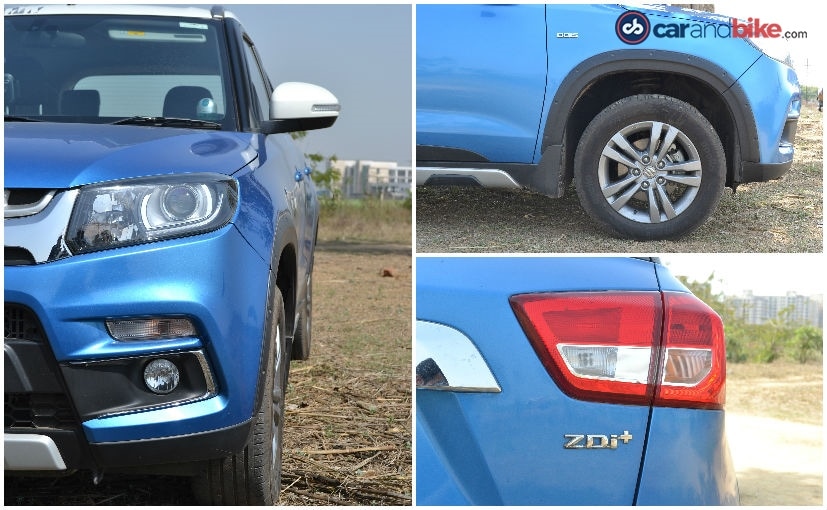 The Maruti Suzuki Vitara Brezza DDiS gets the typical SUV proportions
The Maruti Suzuki Vitara Brezza DDiS gets the typical SUV proportionsDimensions
The Vitara Brezza is a subcompact SUV and the WRV, well, isn’t! I guess it’s best I refer to it as a subcompact crossover! Both cars are sub 4-metre of course, though its only just so for the WR-V at 3999 mm. The Vitara Brezza sits at 3995 mm and has a 2520 mm wheelbase. The WRV’s wheelbase is more generous by comparison at 2555 mm. The Vitara Brezza has the upper hand when it comes to ground clearance and that’s where the SUV status starts to kick in. At 198mm, the ground clearance is 10 mm more than that of the WR-V. The Vitara Brezza is the typical SUV in its proportions though and is very good looking. The dual-tone roof option is a big hit and Maruti has done one better with the iCreate personalization programme. Kudos to Maruti for that really.
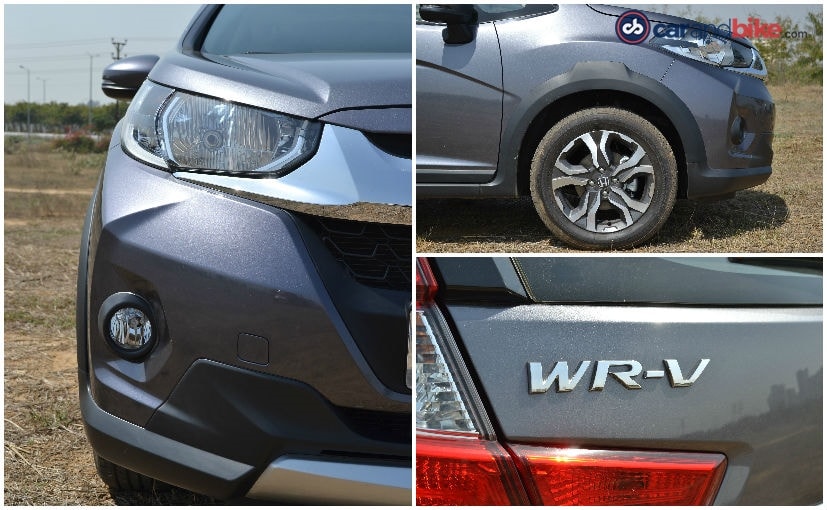 The similarity to the Jazz is concealed well on the Honda WR-V i_DTEC
The similarity to the Jazz is concealed well on the Honda WR-V i_DTECThe WR-V though does manage to make a mark – with great road presence, a high rising hood and some arguably good-looking muscle in the face and flanks. The similarity to the Jazz is well concealed even in its profile thanks to the generous and well-finished cladding. And unlike the BR-V’s rear that looks narrow and forced-on-a-Mobilio, the WR-V has a great looking butt! The taillights are well designed and finished, and the standard DRLs (daytime running lights) are a nice touch too.
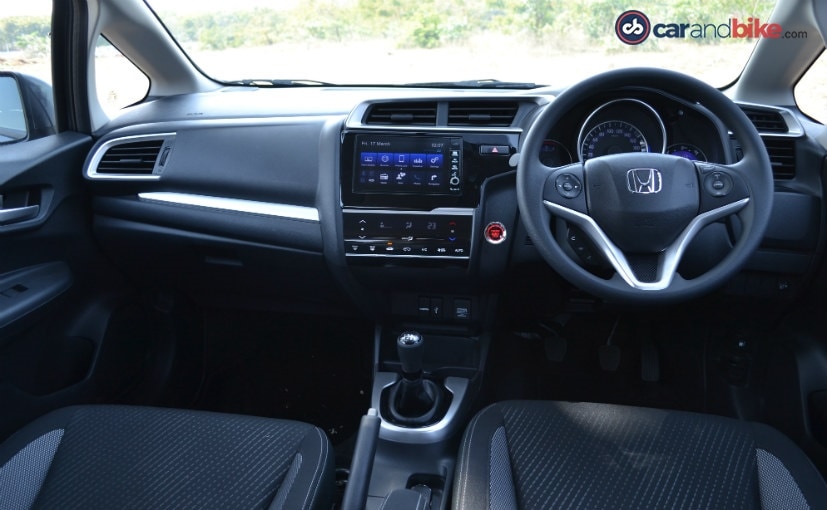 The Honda WR-V i-DTEC is well equipped on features including a sunroof
The Honda WR-V i-DTEC is well equipped on features including a sunroofFeatures
The Honda WR-V comes loaded with some high-end features like a sunroof (a segment first), and a 7-inch touchscreen infotainment system or as Honda calls it – the Digipad! It has navigation, a 1.5 GB internal memory, optional Wi-Fi for internet support, a reverse camera – with normal and top-views, and smartphone connectivity through Mirror Link. The diesel top-spec gets a start/stop button, smartkey entry and cruise control. But safety equipment is standard across all variants with ABS, EBD and dual airbags.
 The Maruti Suzuki Vitara Brezza DDiS is similarly specced as the WR-V
The Maruti Suzuki Vitara Brezza DDiS is similarly specced as the WR-VThe Maruti Suzuki Vitara Brezza gets a touchscreen infotainment with Apple CarPlay, keyless entry, engine start/stop button, dual airbags (only the driver side airbag is standard across variants) and ABS/EBD. You can opt for the safety pack across all variants though. Oh and in case you’re wondering, there’s no Apple CarPlay or Android Auto on the WRV – a bit of a miss frankly.
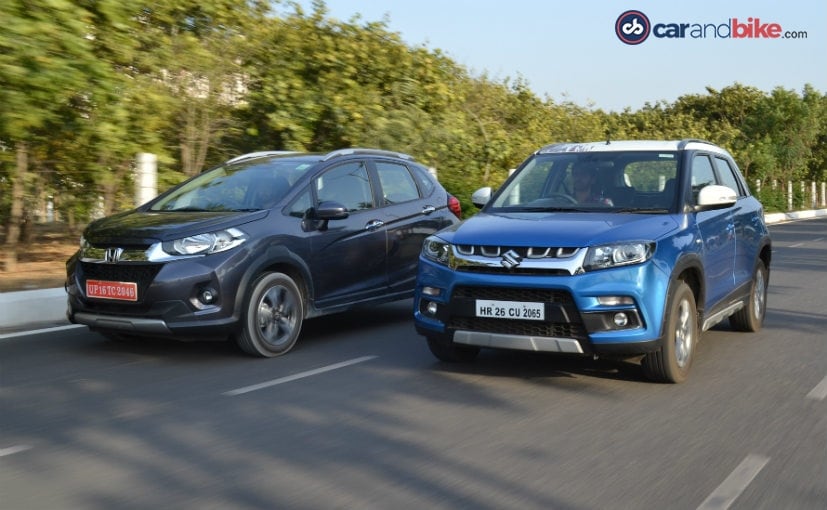 The Honda WR-V i-DTEC 1.5 litre diesel is the most powerful in the segment
The Honda WR-V i-DTEC 1.5 litre diesel is the most powerful in the segmentPerformance
The Honda WR-V comes in both petrol (1.2 litre i-VTEC) and the aforementioned diesel. The petrol motor makes 89 bhp and 110 Nm of torque, while the oil burner develops 99 bhp and 200 Nm of torque. The Maruti Suzuki Vitara Brezza which is only available in diesel churns out 89 bhp and 200 Nm of torque. The WR-V is one of the most powerful crossovers in the country but has been tuned for fuel efficiency and that’s where it loses out on a bit of punch right at the word go. The Vitara Brezza has 10 bhp less than the WR-V but feels more eager and sportier in its engine response. The WR-V’s 6-Speed does come across as more refined though. Both engines are fairly noisy, but once again it is the Honda i-DTEC that will disappoint when it comes to engine noise. That’s because you hear the engine clatter inside the cabin way more – even though it’s a lot better than on other Honda models that use the same engine. And that’s a pity, because the motor is otherwise quite refined. Maruti claims mileage of 24.3 kmpl, but Honda has now got the segment-best tag with the WR-V claiming 25.5 kmpl on the diesel. Its 17.5 kmpl on the petrol by the way.
Ride And Comfort
The big sore point with the engine noise and the slight unresponsiveness at lower rpms is where the list of complaints end though. The overall experience in the WR-V will leave you very satisfied as it is well put together and comes across as rich and refined. The ride quality and suspension setting is really rather good and you’ll find that the seats too add to that. They are well designed and ample – unlike the Vitara Brezza’s which appear a bit flimsy by comparison. The Vitara Brezza does not have a hint of roll, but still feels a bit bouncy given how light the car is to begin with. And the difference in build also comes through on this aspect. Where the WR-V feels more planted, the Vitara Brezza does not. And this is purely on comparison – as in isolation the Vitara Brezza does not disappoint.
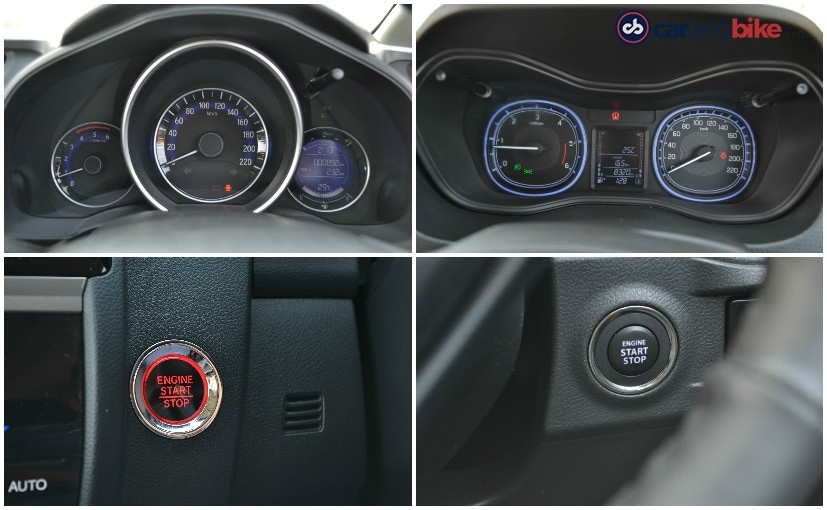 The Maruti Suzuki Vitara Brezza DDiS is the better value product
The Maruti Suzuki Vitara Brezza DDiS is the better value productValue
So as I appear to flip flop which way is this faceoff going to go, eh? Well I have to say that the Vitara Brezza is hands down the better value product – after all the diesel-only car starts at Rs. 7.26 lakh for the LDI and goes up to Rs. 9.92 lakh for the ZDI+ with the dual-tone (contrast) roof. The WR-V S is priced at Rs. 7.75 lakh for the petrol S variant, but the diesel variants are at Rs. 8.79 lakh (S) and Rs. 9.99 lakh (VX). But Honda has chosen not to offer the quintessential “base” variant as sales patterns show more buyers opting for better-loaded variants anyway. While I wish Honda all the luck with this gamble – since a base price is sometimes a hook to draw in buyers – I need to now tell you which car wins this battle.
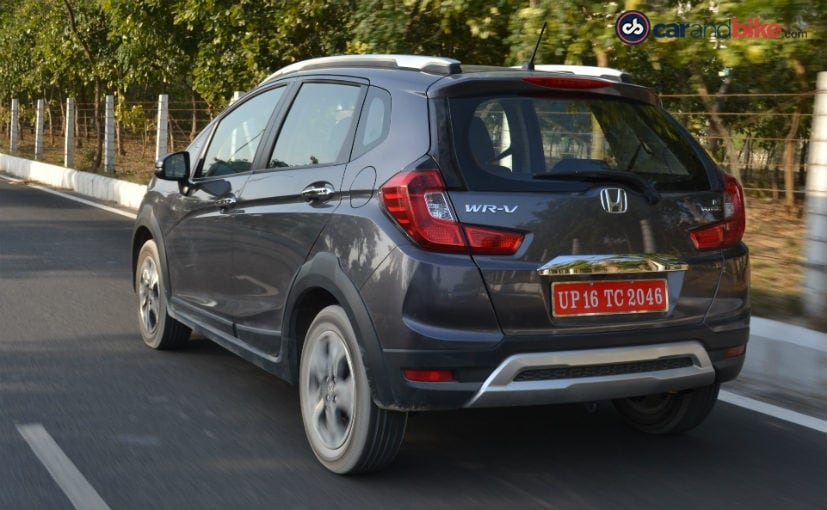 If SUV proportions are not important, the Honda WR-V i-DTEC has the edge
If SUV proportions are not important, the Honda WR-V i-DTEC has the edgeVerdict
The Vitara Brezza is the no-brainer for not just its looks and cool and young customisation options, but also its efficiency and the sheer fact that it is a Maruti Suzuki! It’s also a bestseller (with sales having crossed 1 lakh units), with a proven engine and good feature list. But if its refinement and pampering you seek, and are not fixated on the shape being more or less SUV-like – the WR-V has the edge. It’s good to see Honda come back strongly with a well-finished product. If our market policies didn’t dictate otherwise I am sure the 1.5 i-VTEC from the City would have been the better engine choice for this car. Honda’s push for segment-best mileage has dulled the punch on the diesel too. But on every other count the WR-V will make you feel good about it. Throw in Honda reliability and usually good resale premiums, and things start to sway its way. SO there it is – the WR-V wins this rather close contest.
Last Updated on April 7, 2017




















